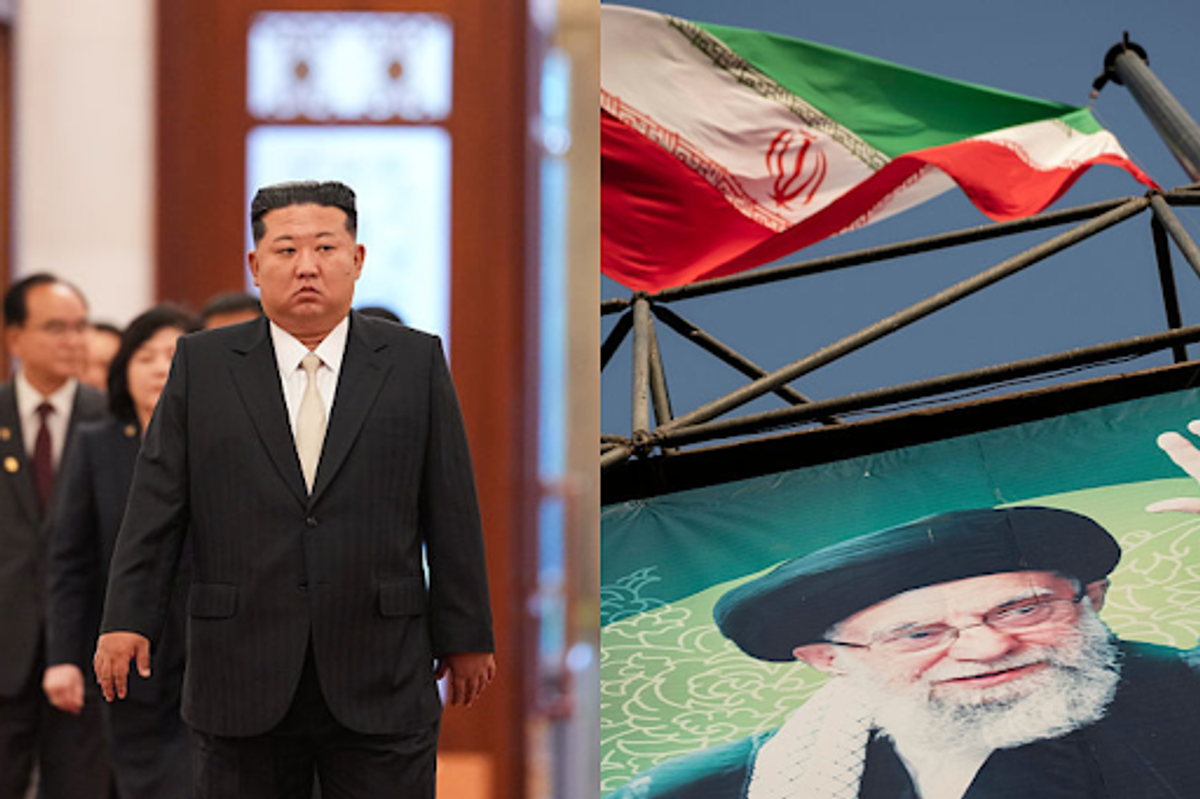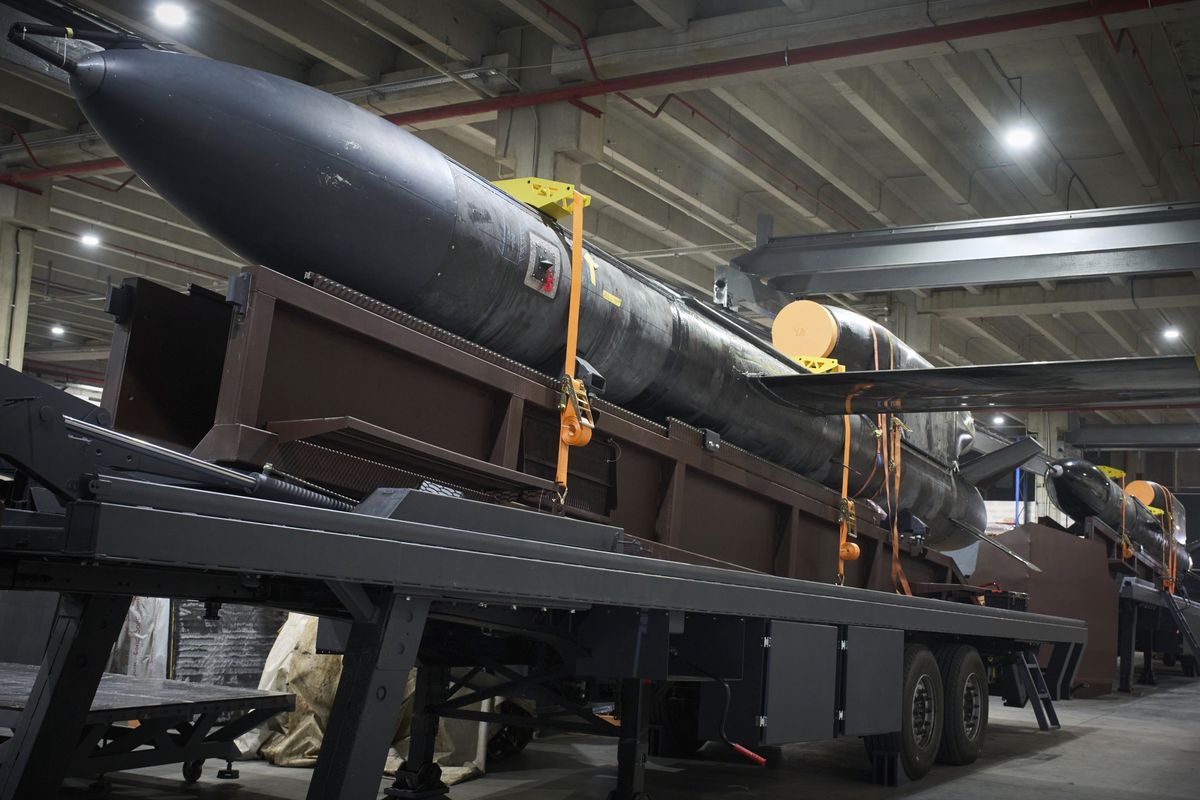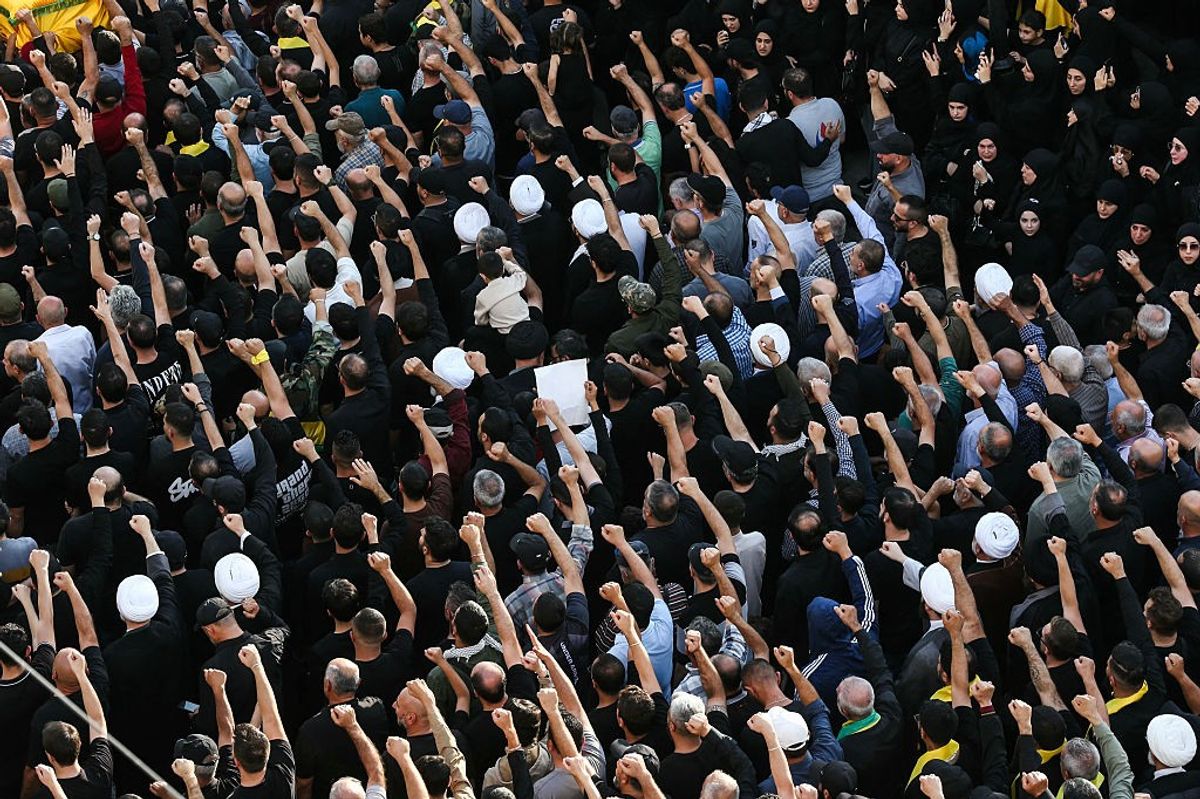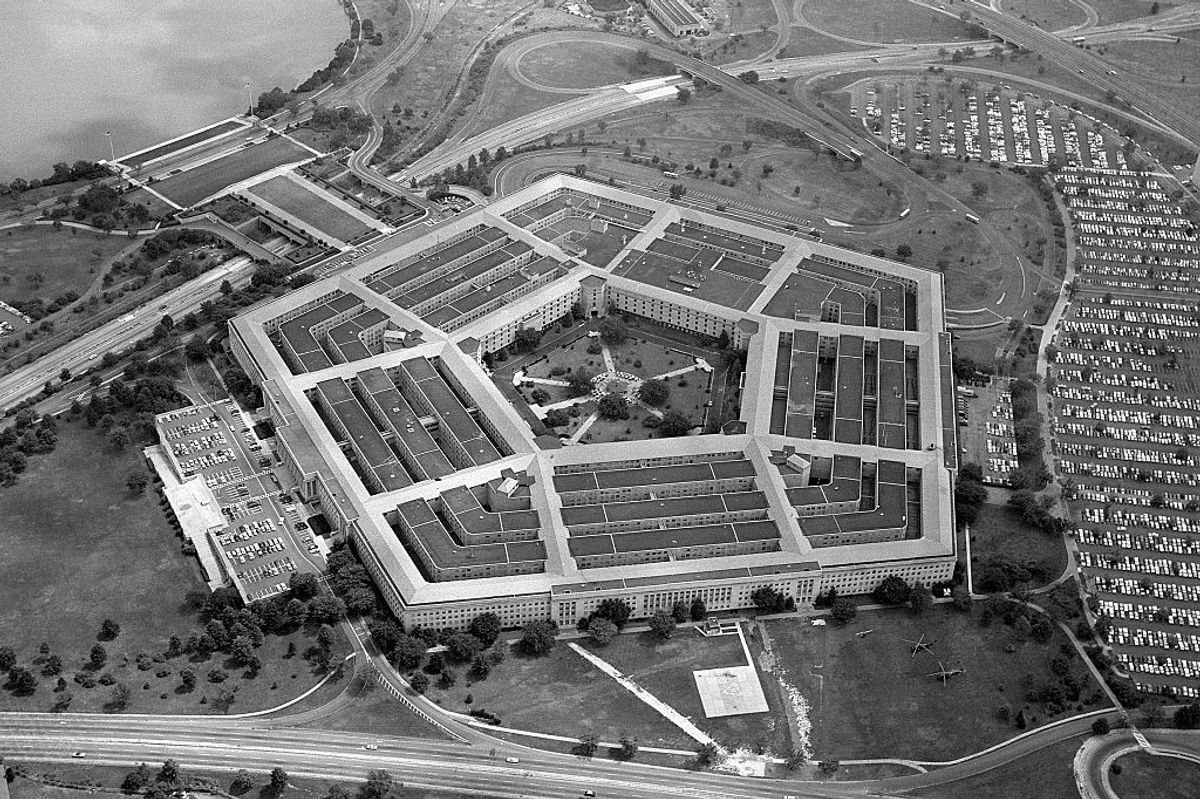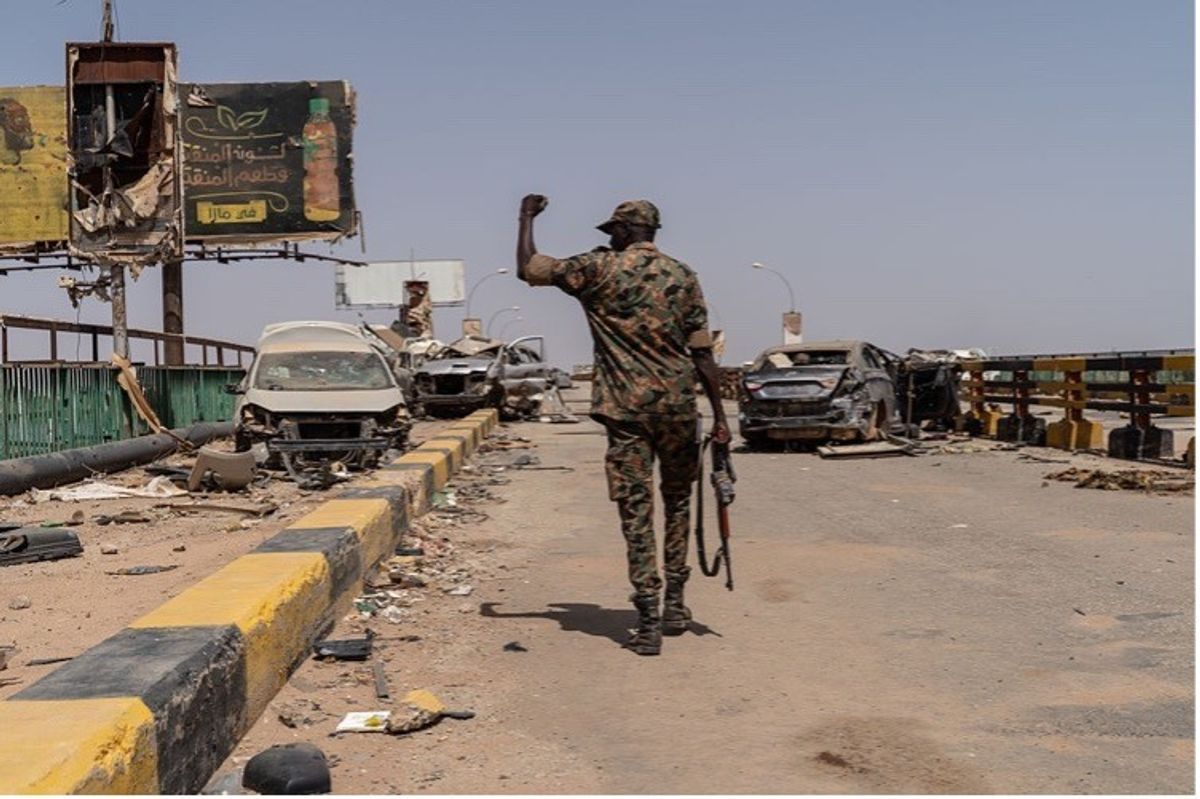DEEP DIVE — As the war in Gaza rages, ceasefire talks founder, and the world waits for – and worries about – an Iranian retaliation for a pair of Israeli assassinations, one thing is clear: the U.S. has made a show of military force in the region that is almost unprecedented for a nation that is not at war.
It’s a staggering array of warships, military planes and weaponry that is often lost in the daily news from Gaza. Since Hamas’ terror attack against Israel nearly a year ago, successive deployments have ringed the region with two aircraft carrier groups, nearly 20 warships, and more than 100 fighter aircraft – all aimed squarely at Iran and its various proxies in Lebanon, Gaza, Yemen and other parts of the Middle East.
“If you’re Iran looking out the window, you’re looking at quite an array set up to help the Israelis defend anything that comes in their direction,” said Vice Admiral Kevin Donegan, USN (Ret.), a Cipher Brief expert and former commander of the U.S. Navy’s Fifth Fleet. “It’s all a coordinated joint effort to provide the best posture to deter Iran, protect our own troops and defend Israel against an attack.”
“Hezbollah gazes west and sees this array of U.S. naval vessels…and then the Iranians gaze off to their south to the Indian Ocean, and they see vessels there,” former U.S. Ambassador to Oman Gary Grappo told The Cipher Brief. “And lurking among all of these is a U.S. submarine, carrying pretty advanced cruise missiles. And so (the Iranians) have to be thinking about their exposure level and their inability to defend against these weapons.”
Warships and warplanes, everywhere you look
It’s a dizzying collection of American air and naval assets, a heavy deployment that began in the wake of the October 7 attacks and was ratcheted up after Iran threatened retaliation against Israel for the July killing of Hamas leader Ismail Haniyeh in Tehran.
The two carrier groups in the region are the USS Abraham Lincoln and the USS Theodore Roosevelt, which recently had its deployment extended. Each of these includes the carrier itself, a guided-missile cruiser, and multiple guided-missile destroyers. The Pentagon has dispatched additional warships capable of ballistic missile defense to the eastern Mediterranean.
Also in the mix are fighter jet squadrons and refueling tankers, along with the USS Wasp Amphibious Ready Group and other assets sent in the event that evacuations of U.S. personnel become necessary.
“The U.S. has responded with a massive military force,” Norman Roule, a former National Intelligence Manager for Iran at ODNI, told The Cipher Brief. “The U.S. naval and aircraft defense assets in the region are the most sophisticated on the planet.”
While the force posture is a powerful message in itself, experts also note that the Pentagon has spoken publicly – and often – about the deployments, presumably as one more way of conveying a warning to Tehran and its proxies.
In the days that followed the Haniyeh assassination, after Iran’s Supreme Leader Ayatollah Ali Khamenei vowed to inflict “harsh punishment” on Israel, the Defense Department announced the deployment of the Abraham Lincoln carrier group along with additional F-22 fighter jets, and Defense Secretary Lloyd Austin took the unusual step of publicly announcing the deployment of the nuclear-powered, guided-missile submarine USS Georgia to the Middle East. The Pentagon rarely publicizes the movements of its submarine fleet.
The Georgia carries up to 154 cruise missiles and teams of Navy SEAL commandos. Overall, U.S. vessels in the region have at least 500 Tomahawk cruise missiles ready to attack Iranian targets.
The Iranians “know that the United States possesses overwhelming force and could do extraordinary damage to Iran now, with the deployment of something like 20 U.S. naval vessels in the Indian Ocean just off of Iran, as well as the Eastern Mediterranean off the coast of Southern Lebanon,” Ambassador Grappo said.
“All of that is to say that the United States can bring overwhelming power to any potential conflict and inflict devastating damage in a very short period of time," he added. "And I think that's the real message for the Iranians. ”
Everyone needs a good nightcap. Ours happens to come in the form of a M-F newsletter that provides the best way to unwind while staying up to speed on national security. (And this Nightcap promises no hangover or weight gain.) Sign up today.
The mission: Respond and deter
That message is what the U.S. has sought to convey in the month since Israel’s assassination of Haniyeh, to both Iran and its proxies – Hezbollah in particular. The massive show of air and naval force is the military complement to various back-channel diplomatic efforts.
“The projection of U.S. military force closer to Iran’s proxies, and what we’re doing in the Red Sea, is well within reach of any target we would ever want to reach inside Iran,” Paula Doyle, a former CIA Associate Deputy Director of Operations, told The Cipher Brief. “And they know that.”
The specific tasks for American commanders in the region vary. Beginning soon after October 7, U.S. vessels in the Red Sea and Gulf of Aden have responded regularly to Houthi attacks on Red Sea shipping. When the Iran-backed Islamic Resistance of Iraq attacked a small U.S.outpost in Jordan in January, killing 3 Americans, the U.S. responded with a barrage of airstrikes against more than 80 targets in Iraq and Syria. And in April, when Iran retaliated for an Israeli strike on Iranian commanders in Syria, U.S. forces in the region helped intercept “nearly all” the drones and missiles fired by Iran at Israel. The Pentagon said U.S. forces had downed “dozens of missiles” and drones launched from Iran, Iraq, Syria and Yemen towards Israel.
Overall, since October 7, the U.S. has struck hundreds of targets across the Middle East – primarily against Iranian-backed proxies in Iraq and Syria, as well as the Houthis in Yemen.
The more recent additions to the U.S. military presence are clearly meant to deter Iran and Hezbollah from escalation. All those warships and warplanes are, as Doyle said, within striking distance not only of Hezbollah targets in South Lebanon, but Iranian regime targets in Tehran and elsewhere.
Is deterrence working?
The shows of force have been combined with near-daily messaging from the U.S. to say, effectively, that any major attack on Israel by Iran or its proxies will unleash the American firepower in the region.
"Our messaging to Iran is consistent, has been and will stay consistent. One, don't do it,” White House national security spokesperson John Kirby told Israel's Channel 12. “There's no reason to escalate this. There's no reason to potentially start some sort of all-out regional war. And number two, we are going to be prepared to defend Israel if it comes to that.”
Certainly the U.S. believes its show of force is working.
“I think that the additional forces in the theater send a very clear message to all actors in the region that we're serious when it comes to supporting the defense of Israel as well as protecting our forces should they be attacked," Maj. Gen. Pat Ryder, the Pentagon press secretary, said last week.
“The Iranians got cold feet,” Cipher Brief expert and former head of U.S. Central Command, Gen. Frank McKenzie, told The New York Times.
Other Cipher Brief experts agree.
“I think our military presence in the region has been an important factor in deescalating this issue, or least stretching out the timeline to allow diplomacy or other pressures to play a role,” Roule said. “And this military force is inherently something that constrains Iranian activity, because the dispersal and the nature of our aircraft and shipping means that we're going to shoot down a lot of their missiles and drones.”
Similar messages have been sent to South Lebanon as well. An Israel-Hezbollah clash in late August set the region on edge again, but after a ferocious exchange that lasted less than 24 hours, the two sides claimed victory and the guns quieted. It’s impossible to know what moved Hezbollah to hold fire, but its leadership is also well aware that a major attack on Israeli population centers – which the group is capable of carrying out – might bring some of that American force to bear against southern Lebanon.
The Cipher Brief Threat Conference is happening October 5-8 in Sea Island, GA. The world’s leading minds on national security from both the public and private sectors will be there. Will you? Apply for a seat at the table today.
The Asia factor
In what Axios has described as “a frantic year for the U.S. Navy,” many of those American warships in the Middle East have crossed oceans to be where they are now. And some worry about the missions they have left behind in the Pacific.
The two carrier groups in the Middle East began the year at their home port in San Diego and left for scheduled West Pacific deployments in January and July, respectively. The Theodore Roosevelt was in the East China Sea in late June; the Abraham Lincoln left the U.S. Naval Base in Guam on August 8.
As the cliche goes, it’s hard to turn an aircraft carrier around, but in this case the Navy did so, twice, to respond to the situation in the Middle East. That has raised concerns among those who already see the U.S. military as too heavily focused on Europe and the Middle East – rather than China and East Asia generally.
“The buildup will impact the Navy's ability to maintain a robust presence or response capacity in the Pacific, because many of these ships will end up in maintenance periods next year," Bryan Clark, director of the Hudson Institute's Center for Defense Concepts and Technology, told Axios.
The redeployment of two Pacific-based carriers groups left no U.S. aircraft carriers in the Indo-Pacific, which every corner of the Biden Administration has said is its most important national security theater (the "priority theater," as the Pentagon has said) for the first time in two decades.
Pentagon spokesperson Maj. Gen. Pat Ryder responded by stressing that a "significant amount" of American naval forces remain in the region. Then he added, for good measure, that the U.S. military "can walk and chew gum at the same time."
Cipher Brief Researcher Ethan Masucol contributed to this report.
Read more expert-driven national security insights, perspective and analysis in The Cipher Brief.
It’s not just for the President anymore. Cipher Brief Subscriber+Members have access to their own Open Source Daily Brief, keeping you up to date on global events impacting national security. It pays to be a Subscriber+Member.




